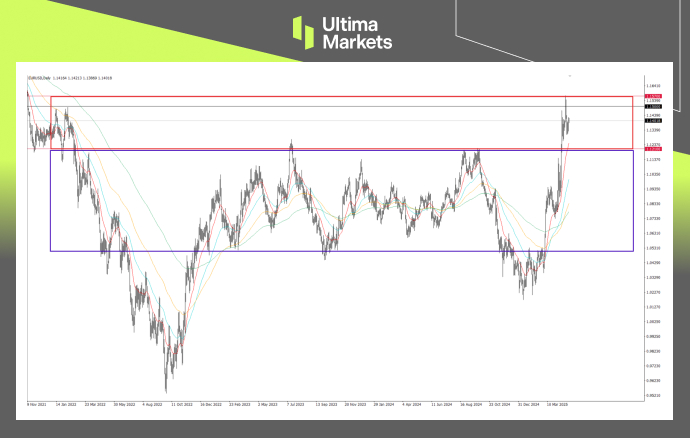Euro Holds Three-Year High as Dollar Struggles
TOPICSThe US Dollar struggled to recover its major losses on Monday as investors remained cautious about the prospects of de-escalation in the US-China trade war, despite President Trump softening his tone and claiming that talks were underway.
US Treasury Secretary Scott Bessent said in an interview on Monday that it was up to China to de-escalate tariffs, while Trump insisted that progress had been made and that he had spoken with Chinese President Xi. The mixed signals from US officials, coupled with China’s denial of such claims, have heightened uncertainty around the trade talks.
Euro Benefits from Dollar Weakness
Ongoing uncertainty regarding trade war de-escalation continues to weigh on the US Dollar, despite a modest recovery last week. On Monday, the dollar weakened further.
Meanwhile, the Euro, the second most traded currency, has benefited from the weaker dollar. It has posted a significant gain in 2025, rising more than 11% from its lows in early January to reach highs near 1.1500 by mid-April.
Despite a slight pullback last week, with EURUSD trading near 1.1300, the Euro remains strong. This appreciation has been driven by fading confidence in the US Dollar amid tariff risks, as well as increased fiscal spending initiatives in Germany and across the Eurozone.
Can the Euro Extend Its Gains?
The Euro is holding near its three-year highs despite a recent pullback from the key psychological level of 1.1500. With the US Dollar likely to remain under pressure given the current market landscape, the Euro is expected to maintain its gains.

(EURUSD, Day-Chart Analysis; Source: Ultima Market MT5)
From a technical perspective, surpassing the 1.1210 major resistance level suggests that EURUSD could maintain its bullish outlook as long as it stays above this level. However, if it remains below 1.1570, it may signal a period of consolidation before another potential bullish extension.
On the other hand, a return below 1.1210 would indicate a loss of bullish momentum in EURUSD, potentially leading to a deeper pullback.
Investors Turn Attention to Non-Farm Payrolls
Investor focus will now shift to the upcoming U.S. non-farm payroll and job market data scheduled for this week.
If the labor market shows significant signs of slowing, it could raise concerns over the U.S. economy, further weakening the dollar and favoring the euro, potentially leading to more upside. Conversely, stronger-than-expected labor data could push the euro back below the 1.1210 level.
Disclaimer
Comments, news, research, analysis, price, and all information contained in the article only serve as general information for readers and do not suggest any advice. Ultima Markets has taken reasonable measures to provide up-to-date information, but cannot guarantee accuracy, and may modify without notice. Ultima Markets will not be responsible for any loss incurred due to the application of the information provided.
Why Trade Metals & Commodities with Ultima Markets?
Ultima Markets provides the foremost competitive cost and exchange environment for prevalent commodities worldwide.
Start TradingMonitoring the market on the go
Markets are susceptible to changes in supply and demand
Attractive to investors only interested in price speculation
Deep and diverse liquidity with no hidden fees
No dealing desk and no requotes
Fast execution via Equinix NY4 server









